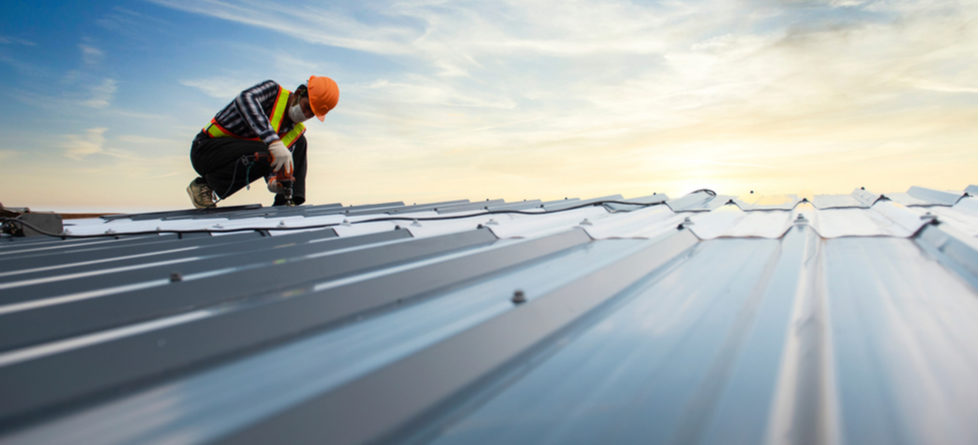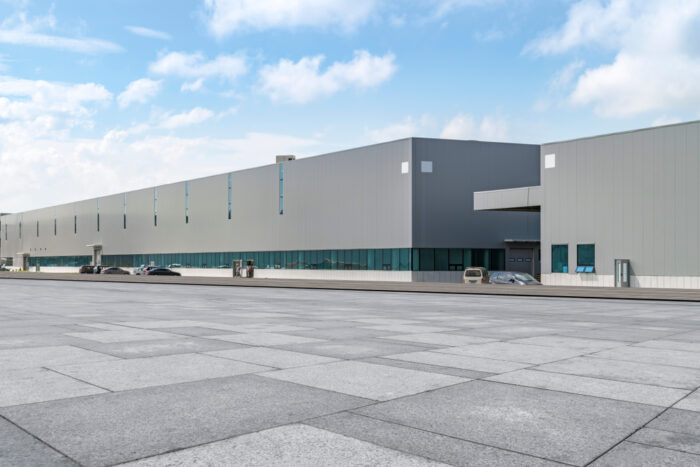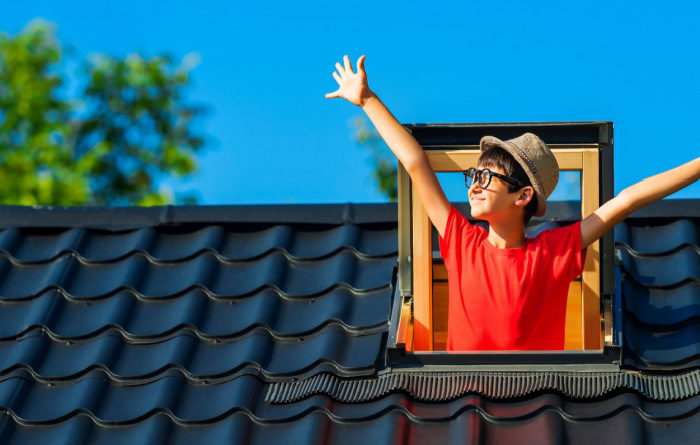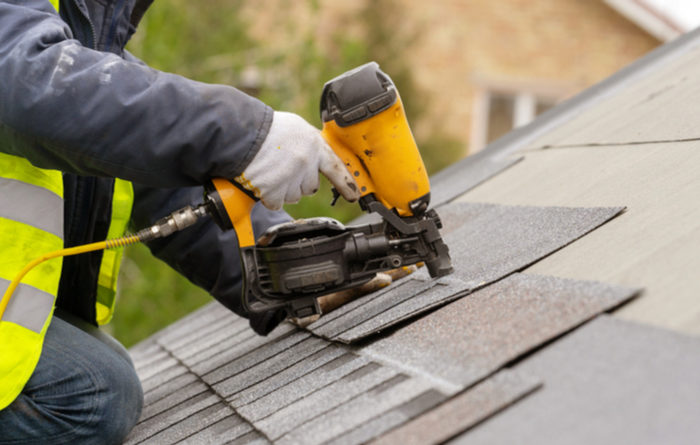Roofing F.A.Q.

What are the five most common types of roofing?
1. Asphalt shingles
Asphalt shingles are the most common type of roofing, with an estimated lifespan of 5 to 10 years. It’s made from a mixture of asphalt, felt paper, and ceramic granules.
2. Metal roofing
Metal roofing comes in copper, aluminum, steel, zinc, and tin. It has an estimated lifespan of 30 to 50 years but is one of the costlier options.
3. Wood shakes and shingles
Wood shakes are made by splitting wood and are usually thicker and more robust than shingles. Shingles are manufactured by sawing wood and tapering its edges, creating a smooth and finished look. With wood shakes and shingles, you can expect a lifespan of 25 to 40 years.
4. Ceramic roofing tiles
Ceramic is another popular option with an incredible lifespan of 50 to 100 years. It is on the higher end of the price scale but comes with many benefits.
5. Slate roof shingles
Slate shingles are considered one of the best options for roofing materials and can last over 100 years with proper maintenance. It is also the heaviest and most expensive option.
What type of roofing is best?
Choosing the best roofing will depend on the climate your home is located in, what your roof deck can support, and the aesthetic you want to achieve. Here is what you should consider when you want to choose the best roofing for your home.
Cost
Asphalt shingles are considered the cheapest roofing option. It’s the best way to replace your roofing at a low cost, but it isn’t considered the most durable. Depending on your climate, you may need to replace your roofing after 5-10 years, which means you will have to pay to have it replaced more frequently.
Aesthetic
Of course, aesthetics are subjective. Many people think slate, metal, and wood look better, but asphalt is more common, which helps it blend in with other homes. There is also a big difference between the look of shingles compared to shakes. Shingles offer a more refined and clean look, while shakes are more rustic.
Weather
Not all homes have the luxury of year-long easy weather. If you live in a region that experiences extreme heat, cold, rain, or hail, you will want to consider a more durable option. They are a bit pricer than asphalt but can save you money by not replacing them every few years.
Construction
The best roofing materials also have a lot to do with the construction of your roof and what it can support. Your options will be determined by the weight your roof can support, whether your roof has rafters or trusses, and its shape.
Durability
The most durable option for roofing is slate roofing. It can last over 100 years and can easily withstand the stresses of extreme weather. The next two most durable options are ceramic and metal roofing.
What are the layers of roofing?
There are three layers to roofing: the roof deck, underlayment, and shingles. Here’s what each layer does.
Roof deck
Roof decking commonly comes in plywood or composite wood, and it’s the first thing that is installed after your roof’s framing. It provides a solid flat surface to support your choice of underlayment and shingles.
Underlayment
Some homeowners might consider underlayment optional, but it is an important layer that prevents mold, water damage, and leaks. After it’s installed, you won’t have to worry about how it looks because the shingles will completely cover it. You can choose a variety of materials as underlayments based on durability, weather protection, and pricing.
Shingles
Shingles come in a variety of materials, each with its own appearance, durability, and cost. Shingles are typically rectangularly shaped and installed in overlapping layers on top of your underlayment. They are first installed from the bottom layer and successively work their way up the roof.
What goes down before shingles?
Roof decking
Roof decking, or sheathing, is the first layer of roofing that supports the underlayment and shingles. For flat roofs, you should consider using a more water-resistant material, while slanted roofs have the benefit of not letting water pool at the top of your home.
The two most common materials for roof decking are plywood and OSB, also known as composite plywood. Plywood is considered a more expensive option but offers greater insulation and protection from the elements. Composite plywood does offer some water resistance and is the go-to option for most roofs.
Underlayment
Although the underlayment isn’t always necessary for some homes, you don’t want to be caught without it when bad weather hits. You can find underlayment in materials like asphalt-saturated felt, rubberized asphalt, and synthetic underlayment.
Rubberized asphalt is considered the best option for waterproofing your roof but is also one of the most costly. The next best option for protection and cost is synthetic underlayment, currently the most popular choice for roofing today.
What goes at the top of a roof?
The shingles are the topmost layer of any roof. They are your home’s first line of protection against the elements and are also one of the most noticeable aspects of your home’s appearance. But there are a few more things that can help your roofing become more durable and extend its lifespan.
Ridge caps
In a traditional sloped roof, the highest point where the two planes meet is called a ridge. Ridge caps are installed to reinforce and weatherproof this area. A ridge cap can be pre-manufactured from plastic, steel, or asphalt materials, and alternatively, a ridge cap can be improvised from shingles.
Flashing
Certain areas of your roof might need extra protection from the weather. Thin metal sheets called flashing help direct water away from crevices and irregular surfaces. The idea is to reinforce areas the three layers of roofing don’t cover, such as chimneys, walls, and anything else that protrudes through your roofing surface.
Gutters
You can also use gutters for additional protection against water and debris. They can redirect water to avoid water damage and stagnation, potentially saving a lot of money in repairs. You can install gutters in various areas on top of your roof and at its sides.





Leave a Comment